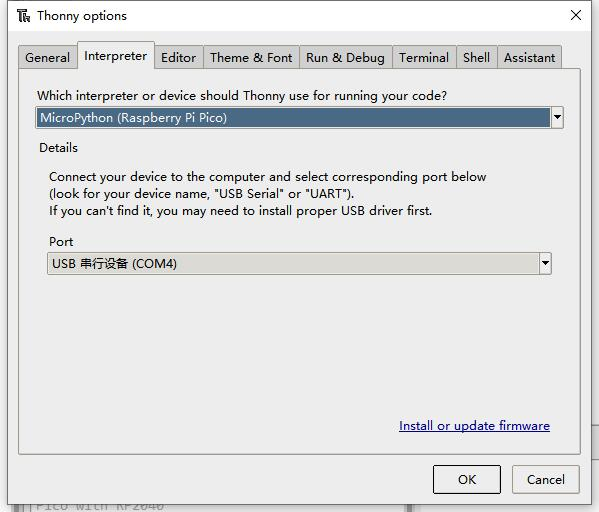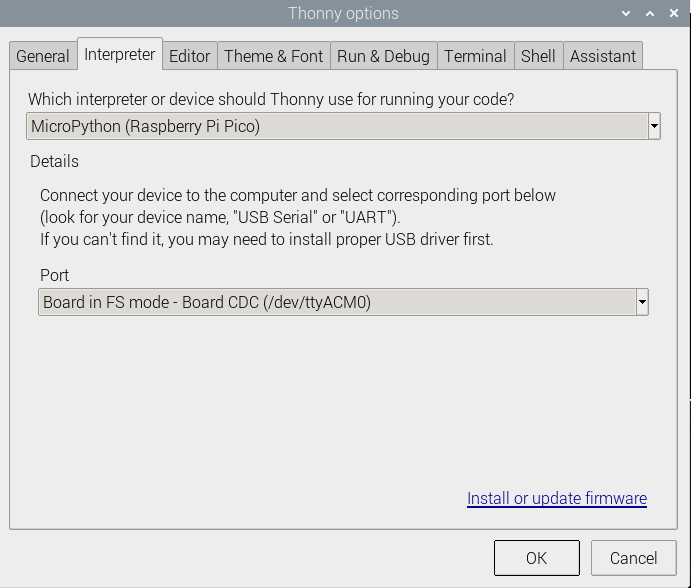DHT22 Temperature-Humidity Sensor
| ||
Overview
This is a calibrated digital temperature and humidity module with onboard sensor DHT22 (AM2302), which features higher accuracy and a wider measuring range than DHT11.
It can be used for detecting ambient temperature and humidity, through the standard single-wire interface.
Specification
- Sensor: DHT22
- Temperature
- Resolution: 0.1°C
- Accuracy: ±0.5℃
- Measuring range : -40°C ~ 80°C
- Humidity
- Resolution: 0.1%RH
- Accuracy : ±2%RH (25°C)
- Measuring range : 0%RH ~ 99.9%RH
- Operating voltage : 3.3V ~ 5.5 V
- Recommended storage condition
- Temperature : 10°C ~40°C
- Humidity : 60%RH or below
Working Principle
The schematic diagram is shown below.
Here are the pin definitions.
| Pin | Symbol | Descriptions |
| 1 | VCC | Power supply (3.3V-5.5V) |
| 2 | GND | Ground |
| 3 | DOUT | Data output, connected to the pin SDA of AM2302 |
The AM2302 uses the simplified single-bus technology for communication, in which only one data line is applied for data exchange and data control in the system. In applications, an external pull-up resistor, about 5.1kΩ, is usually required. When the bus is idle, its status will switch to HIGH. The SDA is used for data communication and synchronization between the microprocessor and the AM2302. It adopts a single-bus data format, 40 bits of data in one transmission, high bit first out. The corresponding timing diagram is shown below.
The AM2302 data and signal format definition are listed below.
| Name | Single-bus data and signal format |
| Start signal | The microprocessor sets the SDA to LOW for a period of time (at least 800μs) [1] to inform the sensor to prepare the data. |
| Response signal | The sensor sets the SDA to LOW for 80μs, and then HIGH for 80μs, to respond to the start signal. |
| Data format | After receiving the start signal, the sensor reads out a string of data (40 bits) through SDA, High bit first out. |
| Humidity | The humidity resolution is 16 Bits, high bit first out; The value read out by the sensor is 10 times higher than the actual humidity. |
| Temp. | The temperature resolution is 16 Bits, high bit first out; The value read out by the sensor is 10 times higher than the actual temperature.
When the MSB(Bit15) is "1", it indicates a negative temperature; When the MSB (Bit15) is "0", it indicates a positive temperature; The other bits (Bit14 ~ bit 0) indicate the detected temperature value. |
| Parity bit | Parity bit = humidity high + humidity low + temperature high + temperature low |
- Single-bus communication timing
When the host (MCU) sends out a start signal (the SDA is set to LOW for at least 800μs), AM2302 will switch from Sleep mode to High-speed mode. After the signal is ended, the AM2302 sends a response signal, and then outputs a string of 40 bits of data via the SDA, high bit first; the outputted data is in the format of Humidity high, Humidity low, Temperature high, Temperature low, and a Parity bit. Information collection starts once the data sending ends. After the collection is finished, the sensor will switch to Sleep mode automatically, waiting for the next communication. (Notes: The data format of DHT22 (AM2302) is different from that of DHT11.)
- Example of Peripherals reading
We will present the steps for data reading in the communication between the host and the sensor.
Step 1
After the AM2302 is powered up (please wait for 2s for AM2302 to become stable. In this period, no command will be sent out on device reading.), the sensor tests the environment temperature and humidity and records relative data. When finished, the sensor enters the Sleep mode automatically. And the SDA data line of AM2302 is pulled up and remains HIGH as the effect of the pull-up resistor. At this moment, the pin SDA of AM2302 is in the INPUT state, detecting any possible external signal.
Step 2
The Microprocessor I/O is set to OUTPUT and outputs a LOW level for more than 800us (The typical hold time is 1ms). Then, the microprocessor I/O is set to INPUT and the bus will be released. At this moment, the microprocessor I/O (the SDA data line of AM2302) goes HIGH as the effect of the pull-up resistor. After the host released the bus, AM2302 sends out a response, a LOW level of 80ms, and then outputs a HIGH level of 80ms to inform the peripheral to receive data. The signal transmission is shown below:
Step 3
After the AM2302 sends the response, the SDA outputs a string of 40 bits of serial data continuously and the microprocessor receives the data according to the changes in the I/O level.
Bit data "0" signal: the level is LOW for 50ms and HIGH for 26-28ms;
Bit data "1" signal: the level is LOW for 50ms and HIGH for 70ms;
The relative signal diagram is shown below:
After the SDA of AM2302 outputted the 40 bits of data, it remains at LOW level for 50ms, and then switches to INPUT state and goes HIGH as the effect of the pull-up resistor. At the same time, the AM2302 internally re-tests the environmental temperature and humidity and records the relative data. When finished, the MCU will enter the Sleep mode automatically. Only when the MCU receives the new start signal from the host, the sensor will wake up and enter the working state.
Video
Pico Getting Started
Firmware Download
Introduction
MicroPython Series
Install Thonny IDE
In order to facilitate the development of Pico/Pico2 boards using MicroPython on a computer, it is recommended to download the Thonny IDE
- Download Thonny IDE and follow the steps to install, the installation packages are all Windows versions, please refer to Thonny's official website for other versions
- After installation, the language and motherboard environment need to be configured for the first use. Since we are using Pico/Pico2, pay attention to selecting the Raspberry Pi option for the motherboard environment
- Configure MicroPython environment and choose Pico/Pico2 port
- Connect Pico/Pico2 to your computer first, and in the lower right corner of Thonny left-click on the configuration environment option --> select Configture interpreter
- In the pop-up window, select MicroPython (Raspberry Pi Pico), and choose the corresponding port
Flash Firmware
- Click OK to return to the Thonny main interface, download the corresponding firmware library and burn it to the device, and then click the Stop button to display the current environment in the Shell window
- Note: Flashing the Pico2 firmware provided by Micropython may cause the device to be unrecognized, please use the firmware below or in the package
- How to download the firmware library for Pico/Pico2 in windows: After holding down the BOOT button and connecting to the computer, release the BOOT button, a removable disk will appear on the computer, copy the firmware library into it
- How to download the firmware library for RP2040/RP2350 in windows: After connecting to the computer, press the BOOT key and the RESET key at the same time, release the RESET key first and then release the BOOT key, a removable disk will appear on the computer, copy the firmware library into it (you can also use the Pico/Pico2 method)
MicroPython Series
【MicroPython】 machine.Pin class function details
【MicroPython】machine.PWM class function details
【MicroPython】machine.ADC class function details
【MicroPython】machine.UART class function details
【MicroPython】machine.I2C class function details
【MicroPython】machine.SPI class function details
【MicroPython】rp2.StateMachine class function details
C/C++ Series
For C/C++, it is recommended to use Pico VS Code for development. This is a Microsoft Visual Studio Code extension designed to make it easier for you to create, develop, and debug projects for the Raspberry Pi Pico series development boards. No matter if you are a beginner or an experienced professional, this tool can assist you in developing Pico with confidence and ease. Here's how to install and use the extension.
- Official website tutorial: https://www.raspberrypi.com/news/pico-vscode-extension/
- This tutorial is suitable for Raspberry Pi Pico, Pico2 and the RP2040 and RP2350 series development boards developed by Waveshare
- The development environment defaults to Windows11. For other environments, please refer to the official tutorial for installation
Install VSCode
-
First, click to download pico-vscode package, unzip and open the package, double-click to install VSCode
Note: If vscode is installed, check if the version is v1.87.0 or later
Install Extension
-
Click Extensions and select Install from VSIX
-
Select the package with the vsix suffix and click Install
-
Then vscode will automatically install raspberry-pi-pico and its dependency extensions, you can click Refresh to check the installation progress
-
The text in the right lower corner shows that the installation is complete. Close VSCode
Configure Extension
-
Open directory C:\Users\username and copy the entire .pico-sdk to that directory
-
The Copy is completed
-
Open vscode and configure the paths for the Raspberry Pi Pico extensions
The configuration is as follows:Cmake Path: ${HOME}/.pico-sdk/cmake/v3.28.6/bin/cmake.exe Git Path: ${HOME}/.pico-sdk/git/cmd/git.exe Ninja Path: ${HOME}/.pico-sdk/ninja/v1.12.1/ninja.exe Python3 Path: ${HOME}/.pico-sdk/python/3.12.1/python.exe
New Project
-
The configuration is complete, create a new project, enter the project name, select the path, and click Create to create the project
To test the official example, you can click on the Example next to the project name to select
-
The project is created successfully
-
Select the SDK version
-
Select Yes for advanced configuration
-
Choose the cross-compilation chain, 13.2.Rel1 is applicable for ARM cores, RISCV.13.3 is applicable for RISCV cores. You can select either based on your requirements
-
Select default for CMake version (the path configured earlier)
-
Select default for Ninjaversion
-
Select the development board
-
Click Complie to compile
-
The uf2 format file is successfully compiled
Import Project
- The Cmake file of the imported project cannot have Chinese (including comments), otherwise the import may fail
-
To import your own project, you need to add a line of code to the Cmake file to switch between pico and pico2 normally, otherwise even if pico2 is selected, the compiled firmware will still be suitable for pico
set(PICO_BOARD pico CACHE STRING "Board type")
Update Extension
-
The extension version in the offline package is 0.15.2, and you can also choose to update to the latest version after the installation is complete
Arduino IDE Series
Install Arduino IDE
-
First, go to Arduino official website to download the installation package of the Arduino IDE.

-
Here, you can select Just Download.

-
Once the download is complete, click Install.

Notice: During the installation process, it will prompt you to install the driver, just click Install
600px
Arduino IDE Interface
-
After the first installation, when you open the Arduino IDE, it will be in English. You can switch to other languages in File --> Preferences, or continue using the English interface.

-
In the Language field, select the language you want to switch to, and click OK.

Install Arduino-Pico Core in the Arduino IDE
-
Open the Arduino IDE, click on the file in the top left corner, and select Preferences
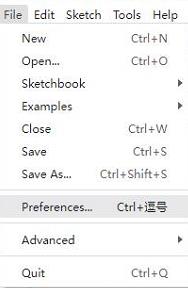
-
Add the following link to the attached board manager URL, and then click OK
https://github.com/earlephilhower/arduino-pico/releases/download/4.0.2/package_rp2040_index.json
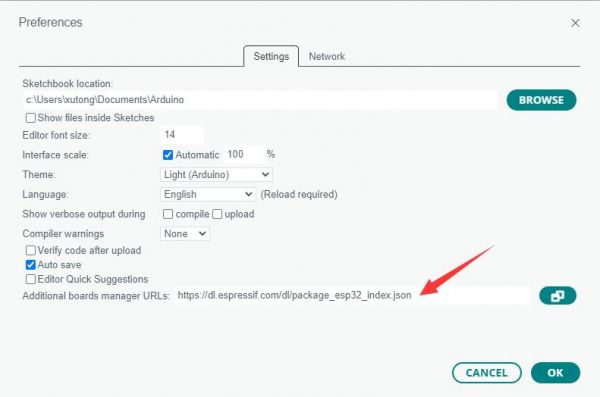
Note: If you already have an ESP32 board URL, you can use a comma to separate the URLs as follows:https://dl.espressif.com/dl/package_esp32_index.json,https://github.com/earlephilhower/arduino-pico/releases/download/4.0.2/package_rp2040_index.json
-
Click Tools > Development Board > Board Manager > Search pico, as my computer has already been installed, it shows that it is installed
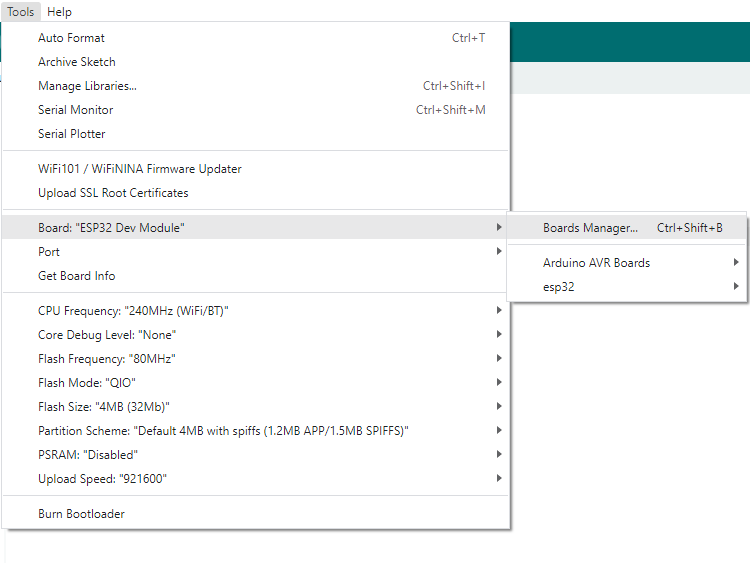
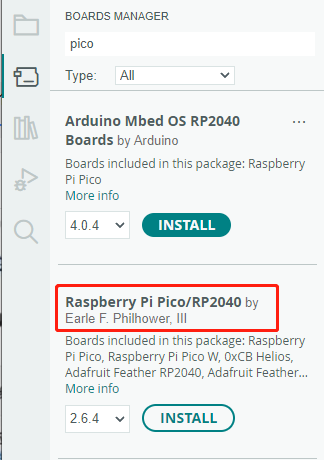
Upload Demo at the First Time
-
Press and hold the BOOTSET button on the Pico board, connect the pico to the USB port of the computer via the Micro USB cable, and release the button after the computer recognizes a removable hard disk (RPI-RP2).
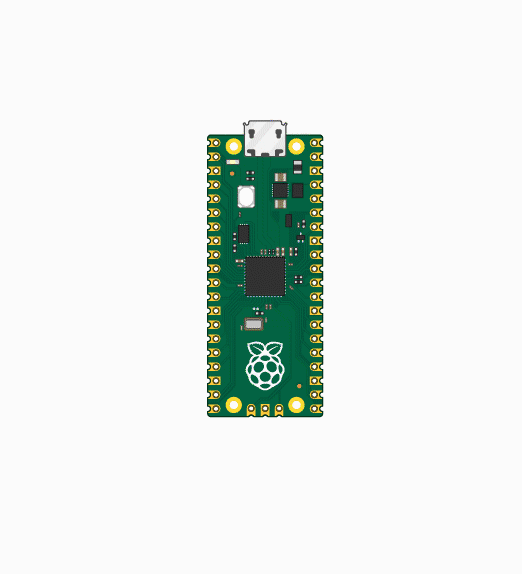
- Download the program and open D1-LED.ino under the arduino\PWM\D1-LED path
-
Click Tools --> Port, remember the existing COM, do not click this COM (the COM displayed is different on different computers, remember the COM on your own computer)
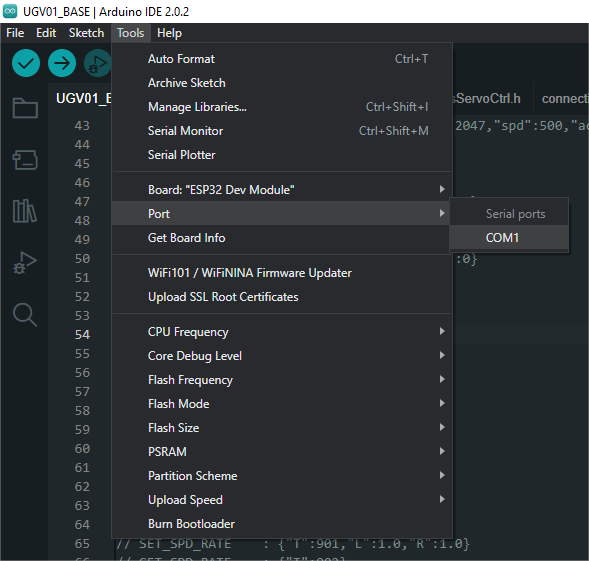
-
Connect the driver board to the computer using a USB cable. Then, go to Tools > Port. For the first connection, select uf2 Board. After uploading, when you connect again, an additional COM port will appear
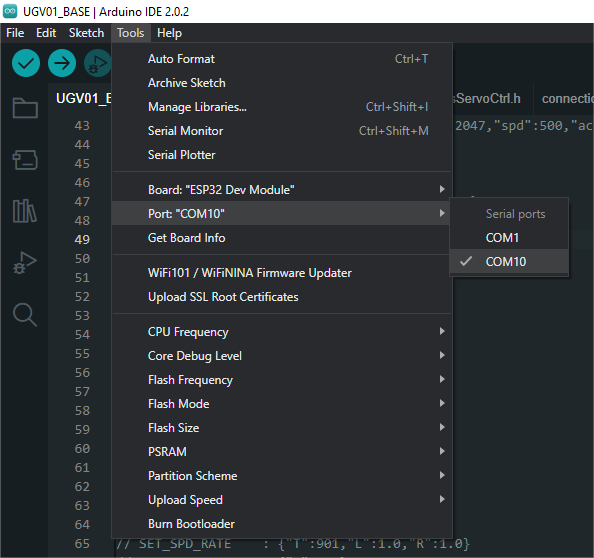
-
Click Tools > Development Board > Raspberry Pi Pico > Raspberry Pi Pico or Raspberry Pi Pico 2
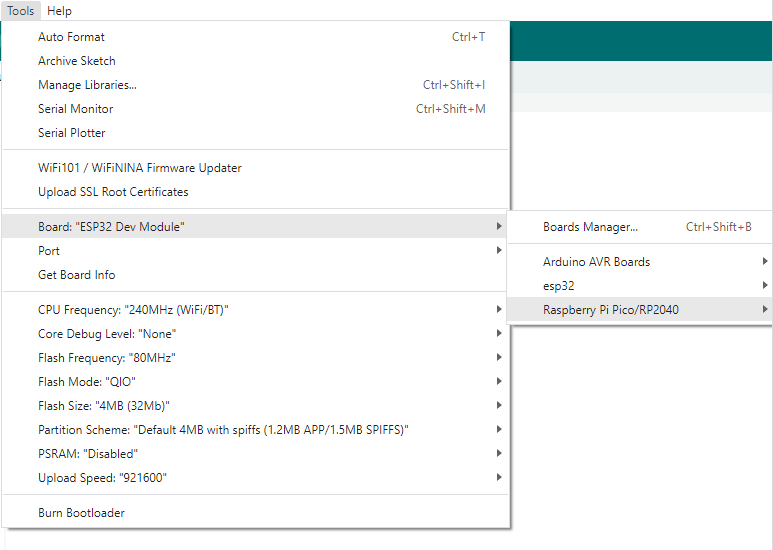
- After setting it up, click the right arrow to upload the program

- If issues arise during this period, and if you need to reinstall or update the Arduino IDE version, it is necessary to uninstall the Arduino IDE completely. After uninstalling the software, you need to manually delete all contents within the C:\Users\[name]\AppData\Local\Arduino15 folder (you need to show hidden files to see this folder). Then, proceed with a fresh installation.
Open Source Demos
MircoPython video demo (github)
MicroPython firmware/Blink demos (C)
Raspberry Pi official C/C++ demo (github)
Raspberry Pi official micropython demo (github)
Arduino official C/C++ demo (github)
Use with Raspberry Pico
Hardware Connection
| Sensor | Pico | Description |
|---|---|---|
| VCC | 3.3V | Power input |
| GMD | GND | Power ground |
| DOUT | GP15 | Digital data output |
Download examples
Use Raspberry Pi as the host device. Open a terminal and run the following commands to download the example.
sudo apt-get install p7zip-full cd ~ sudo wget https://files.waveshare.com/upload/5/57/DHT22-Temperature-Humidity-Sensor-code.7z 7z x DHT22-Temperature-Humidity-Sensor-code.7z -o./DHT22-Temperature-Humidity-Sensor-code cd ~/DHT22-Temperature-Humidity-Sensor-code cd Pico/c/build/
Examples
C codes
The following tutorial is for operating on a Raspberry Pi. However, due to CMake's multi-platform and portable nature, it can also be successfully compiled on a PC. The steps may differ slightly, so users will need to make adjustments accordingly.
- Go into the c directory.
cd ~/DHT22-Temperature-Humidity-Sensor-code/Pico/c/
- Create and enter the build directory within the folder, then add the SDK. Here, ../../pico-sdk refers to the directory of your SDK. In our example program, the build directory already exists, so you can enter it directly.
cd build export PICO_SDK_PATH=../../pico-sdk (Note: Make sure to correctly specify the path to your own SDK.)
- Generate Makefile.
cmake ..
Run it to generate the executable file. The first compilation may take a while.
make -j9
- After building, a uf2 file is generated.
- Press and hold the button of Pico, connect it to Raspberry Pi then release the button.
- Copy/Drag the uf2 file to the portable disk (RPI-RP2) recognized.
cp main.uf2 /media/pi/RPI-RP2/
Micropython codes
Use in Windows
- 1. Press and hold the BOOTSET button on the Pico board, connect the Pico to the USB port of the computer through the Micro USB cable, and release the button after the computer recognizes a removable hard disk (RPI-RP2).
- 2. Copy the Rp2-pico-20210418-v1.15 file in the python directory to the recognized removable disk (RPI-RP2).
- 3. Open Thonny IDE (Note: Use the latest version of Thonny, otherwise there is no Pico support package, the latest version under Windows is v3.3.3).
- 4. Click Tools -> Settings -> Interpreter, and select Pico and the corresponding port as shown in the figure.
- 5. File -> Open -> the corresponding .py file, click to run, as shown in the following figure:

This demo provides a simple program...
Use in Raspberry Pi
- Flash the Micropython firmware first
- Open the Thonny IDE (Menu -> Programming -> Thonny Python IDE).
- 【Optional】If the Thonny IDE in the Raspberry Pi is not the new version that supports Pico, please upgrade it first.
sudo apt upgrade thonny
- Configure Interpreter, choose Tools -> Options... -> Interpreter, choose MicroPython (Raspberry Pi Pico) and the ttyACM0 port.
- Click File -> Open.. and browser the Micropython codes (Photo Interrupter Sensor.py) to run the codes.
Expected result
- The humidity and temperature data are printed to the serial port:
The STM32 examples are based on the STM32F103RBT6 and the STM32H743. The connection provided below is based on the STM32F103RB. If you need to use other STM32 boards, you may need to change the hardware connection and port the code yourself.
Use with STM32
Hardware connection
| Sensor | STM32 | Description |
|---|---|---|
| VCC | 3.3V | Power input |
| GMD | GND | Power ground |
| DOUT | PA0 | Digitial data output |
Examples
The examples are developed based on the HAL libraries. Download the Demo codes archive to your PC. Unzip and find the STM32 project from DHT22-Temperature-Humidity-Sensor-code\STM32\STM32F103RB\MDK-ARM.
- Open the DHT22 Sensor.uvprojx file by Keil.
- Build and the project.
- Program the project to your STM32 board.
- Connect the UART1 of your STM32 board to the PC and check the serial data by SSCOM software.
The Arduino example is written for the Arduino UNO. If you want to connect it to other Arduino boards, you may need to change the connection.
Use with Arduino
Hardware connection
| Sensor | Arduino | Description |
|---|---|---|
| VCC | 5V | Power input |
| GMD | GND | Power ground |
| DOUT | D2 | Digital data output |
Examples
- Download the demo codes to your PC and unzip them.
- Install the Arduino IDE on your PC.
- Go into DHT22-Temperature-Humidity-Sensor-cod/Arduino/.
- Run the .ino file.
- Select the correct Board and the Port.
- Build the project and upload it to the board.
- Open the serial monitor of the Arduino IDE or the SSCOM software and check the serial data.
Resources
FAQ
Support
Technical Support
If you need technical support or have any feedback/review, please click the Submit Now button to submit a ticket, Our support team will check and reply to you within 1 to 2 working days. Please be patient as we make every effort to help you to resolve the issue.
Working Time: 9 AM - 6 PM GMT+8 (Monday to Friday)












